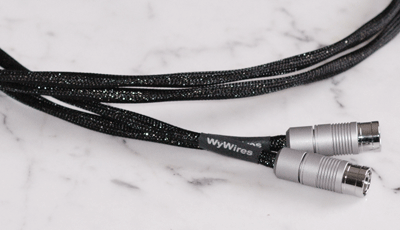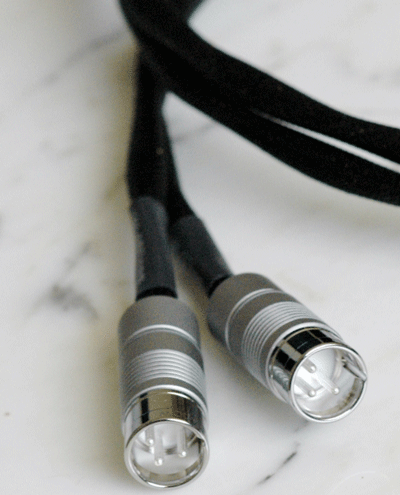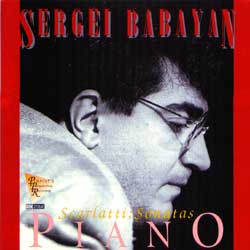Wywires Revisited
|
Wywires Revisited: |
|
The Gold XLR Interconnect |
|
|
|
April, 2012 |

I recently received a pair of new Wywires “Gold” interconnects for my delectation and possible review. My previous experience with Wywires cables was so positive that I welcomed the chance to audition their current “best” (and most expensive) cable and to hear if it represented a significant improvement over my reference Wywires “Silver”. The answer to this question was apparent as soon as plugged in the cables: and that answer was an emphatic “yes.” This may well be the best interconnect I’ve heard in my new stereo.
The wiring configuration of the Wywires interconnect has changed since I reviewed the Preamp Out XLR (and LITESPD Digital XLR) last year (here). If you recall my comments in that review, you will understand that I am not unduly surprised to learn that significant design changes have occurred: I rather expected it. I prefer to think of perfection not as some point of stasis, but as an ongoing (and inevitable) process of improvement. And after all Wywires is a one man show founded, you might say, on curiosity and experimentation. Perhaps I should also note that the possible permutations of wire material and gauges, differential bundle counts, dielectric materials, connectors, and methods of construction are fairly mind boggling in number.
The current Wywires interconnect series includes a new a low-end model called the Blue that sells for $499. The “new” Silver—the successor of the model I reviewed—sells for $1299. As I noted in the previous review, the “old” Silver interconnect uses six strands of 30 gauge litz for the return and 12 strands of 36 gauge litz for the signal. The “new” Silver uses 12 strands of 36 gauge litz for the return and 10 strands of 38 gauge litz for the signal. (The design of Wywires cables is both interesting and instructive but I will omit further details here. Please see my previous review for information about the use of litz wire as well as differential gauges and wire counts, both of which are primary to the design and sonic character of Wywires.) And lastly, there is a new Gold model that sells for $1599 and which is the subject of this review.
Alex Sventitsky, Wywires owner/designer, told me there was a specific reason for the changes in the configuration of the wire bundles. The “old” versions of Wywires interconnects were designed specifically as either “pre-amp out” cables or “source” cables. These two locations in the audio chain—typically referred to as “line level” and “signal level”—carry different voltages and currents. The previous generation of Wywires cables were made up of different wire bundles optimized for each location. (I’d not encountered a location-specific interconnect cable before.) But according to Mr Sventitsky, some customers found the distinction between “source” and “pre-amp out” a little confusing. So he set out to redesign his interconnect, developing a bundle configuration that would sound the same in both locations. The old differentiating names were dropped and the new-generation Wywires interconnect is now perfectly suitable for either location in the audio chain.
Now, I have not auditioned the “new” Silver, but I gather from Mr Sventitsky’s comments to me that empirical differences from the “old” Silver are pretty minor, which he described as ‘slightly enhanced detail’. While even slightly enhanced detail sounds like an inherently good thing, some customers—who had described their systems as rather “bright” sounding—have expressed a preference for the older version. So the “old” version of the Silver is being made available as a special order. Although this may add a touch of complexity to choosing a Wywires interconnect, in my opinion it is an advantageous approach. Most of us know if our system is on the bright side. My old line-source ribbon loudspeakers, for example, definitely were—oodles of treble detail. Whereas my new NSMT monitors are more laid back, more neutral, and might benefit from the new wire configuration. (In fact, I believe they do.) I hasten to reiterate, these were described assubtle differences, and by the designer himself who has put in countless hours listening to his cable designs. I doubt very much that an overly bright stereo could be revamped to neutrality by a pair of interconnects. But then again, maybe so. Wywires, in any case, offers a 30 day money back return policy. You can judge for yourself, risk free.
The new high-end Gold cable uses the same wire bundles and insulation as the new Silver, but—and this makes a crucial difference—the Gold has a Bybee Slipsream Quantum Purifier in series with hot at the amplifier end (in the case of XLRs, this is the male connector). I believe Jack Bybee recommends placing quantum purifiers as close to the final destination—the loudspeaker—as possible. Thus the logic of installing the Slipstream downstream, at the amplifier end of the cable. The Teflon tube which contains the two litz bundles and the ground wire is slightly larger in the new Gold than in my old Silver to accommodate the proximal end of the Bybee purifier. Sventitsky chose to use the least expensive (copper) version of the Slipstream purifier to avoid any potential issues arising from the joining dissimilar metals, since all Wywires cables too are made from copper wire. (However, all three models are soldered with WBT 4% silver-bearing solder—one of the finest solders you can buy. But the use of solder renders the electrical properties of the junction more complex than crimping would. I do not know Mr Sventitsky’s views on crimping, nor do I know if crimping is even possible for this application). The choice of copper Slipstream purifiers, serendipitously, helps to moderate the manufacturing cost of the cables. Slipstram quantum purifiers are also available in more expensive silver and gold versions which use those metals respectively, instead of copper. The actual body of the purifiers, where the real work gets done, is identical in all three purifiers and they do their top-secret magic in identical fashion.
A word about the XLR connectors used for the Gold cable. As one might expect from a no-holds-barred, premium version of the Wywires cable, these are not your ubiquitous Neutriks. Don’t get me wrong; Neutrik connectors are the de facto standard of the industry for a reason. They work really well and represent excellent value. Many very expensive cables use Neutrik connectors. But the Xhadow XLRs used in constructing the Gold interconnect, go considerably further toward a theoretical ideal. And rather than retailing for maybe $15 a pair, Xhadows retail for $165 a pair.
I don’t know exactly what type of plastic Neutrik uses for the inner body of their connectors, but the Xhadow uses a machined cylinder of Teflon (polytetrafluoroethylene, or PTFE). PTFE has a dielectric constant of 2.1 (for comparison, a vacuum is 0.0, air is 1.0, and polyvinyl chloride is 3.18). Even accepting that dielectric properties can make an audible difference, can the properties of a half-inch length of body material make an audible difference? And where Neutrik uses gold plated brass pins, Xhadow uses silver plated copper pins. Same question: can the half inch of metal from which a male (or female) pin is constructed and plated make an audible difference? Of course I don’t know the answer to these questions with certainty. But I can refer you to a simple reality of audiophile life: we spend hundreds, thousands, on AC receptacles and plugs and wire. And if an Oyaide AC plug costing $250 can make an audible difference, then I expect the use of Teflon rather than plastic in an XLR plug can make an audible difference. There is certainly no question that Teflon is theoretically superior to plastic, just as copper is superior to brass.

Visually these XLRs are small works of art, impeccably finished and polished, with provision for contact security and strain relief. (Xhadow RCAs, which come it at a mere $110 a pair, are similarly excellent in design and construction.) I feel there is a kind of aesthetic symmetry in using top-end XLR plugs when one is setting out to make a top-end cable.
A Teflon inner tube, immediately under the woven outer serving of the cable, is color-coded, blue for the Blue, silver for the Silver and, of course, gold for the Gold. These various colors can be seen through the lose weave of the serving. I presume the source of these colors is non-conductive and non-capacitive to minimize dielectric constant. Aiming for the lowest possible dielectric constant is yet another reason why Wywires use no shielding (with the exception of their USB cable where shielding is mandatory to meet protocol specifications). Absence of shielding is a design decision, just as using multiple shields—as many cables do—is a design decision. Both approaches have valid theory on their side.
 Mozart: Complete Piano Concertos, Murray Perahia, piano/conductor (Sony 82876872302). It is not all that long ago I was praising Mozart’s piano concertos in another cable review. To do so yet again may not show the most diverse taste—nor imply the largest CD collection on the planet—but I can hardly help myself. This really is such amazing music, even the early concertos in which, the experts tell us, Mozart had yet to fully master the musical form he had virtually created. It is as if Mozart was guided by an inner light of such unrelenting purity that, over a decade, it flamed brighter and more beautifully, even as his skills and creativity matured. And the sound! The piano is the radiant center of one of the most convincing and realistic presentations I’ve experienced. How can I describe it? You know how some concert halls have adjustable panels on the ceiling and walls to alter the acoustics? So that by merely changing certain of their angles you can create a venue of greater aliveness, greater ambient clarity? Or to use a different image, imagine looking at a scene through a lens of greater clarity and resolution. That, in a nut shell, is what the Wywires Gold does for this recording. There is so much detail and aliveness to the sound! The whole orchestra seems elevated to a new level of realism and a new level of beauty. There is an increased sense of actually being in that venue.
Mozart: Complete Piano Concertos, Murray Perahia, piano/conductor (Sony 82876872302). It is not all that long ago I was praising Mozart’s piano concertos in another cable review. To do so yet again may not show the most diverse taste—nor imply the largest CD collection on the planet—but I can hardly help myself. This really is such amazing music, even the early concertos in which, the experts tell us, Mozart had yet to fully master the musical form he had virtually created. It is as if Mozart was guided by an inner light of such unrelenting purity that, over a decade, it flamed brighter and more beautifully, even as his skills and creativity matured. And the sound! The piano is the radiant center of one of the most convincing and realistic presentations I’ve experienced. How can I describe it? You know how some concert halls have adjustable panels on the ceiling and walls to alter the acoustics? So that by merely changing certain of their angles you can create a venue of greater aliveness, greater ambient clarity? Or to use a different image, imagine looking at a scene through a lens of greater clarity and resolution. That, in a nut shell, is what the Wywires Gold does for this recording. There is so much detail and aliveness to the sound! The whole orchestra seems elevated to a new level of realism and a new level of beauty. There is an increased sense of actually being in that venue.
 Scarlatti Sonatas, Sergei Babayan,piano (ProPiano PPR 224506). The first CD I ever bought (from a ‘record club’—do they still have those?) was a selection of Scarlatti keyboard sonatas played by one of the 20th Century’s most remarkable pianists, Vladimir Horowitz. Sheer technical perfection; Horowitz’s headlong rush toward a musical goal that has always proven elusive to me. For all his technical wizardry, Horowitz’s playing strikes me as more about Horowitz and less about the composer. Sergei Babayan is quite different, less concerned with getting from A to B like a blazing comet, more concerned with the scenery along the way and our enjoyment of the journey. Of course Mr Babayan is not the technical equal of Horowitz—but then, who is? A performance along more human and humane lines, with a lot to offer the listener besides pianistic astonishment. Domenico Scarlatti was an absolute original, writing 555 single-movement sonatas for harpsichord and fortepiano. Indeed, his inventiveness in the relative handful of sonatas I’ve heard, is nothing short of astounding. There is a clear Iberian influence in Scarlatti’s melodies and in his precise, driving rhythms, characteristics that immediately endear themselves to me. Not only is the sound crystal clear and dynamic with the Wywires Gold cables, there is an appealing warmth and articulateness. Quite wonderful and revealing of the affection and artistry this pianist brings to the music.
Scarlatti Sonatas, Sergei Babayan,piano (ProPiano PPR 224506). The first CD I ever bought (from a ‘record club’—do they still have those?) was a selection of Scarlatti keyboard sonatas played by one of the 20th Century’s most remarkable pianists, Vladimir Horowitz. Sheer technical perfection; Horowitz’s headlong rush toward a musical goal that has always proven elusive to me. For all his technical wizardry, Horowitz’s playing strikes me as more about Horowitz and less about the composer. Sergei Babayan is quite different, less concerned with getting from A to B like a blazing comet, more concerned with the scenery along the way and our enjoyment of the journey. Of course Mr Babayan is not the technical equal of Horowitz—but then, who is? A performance along more human and humane lines, with a lot to offer the listener besides pianistic astonishment. Domenico Scarlatti was an absolute original, writing 555 single-movement sonatas for harpsichord and fortepiano. Indeed, his inventiveness in the relative handful of sonatas I’ve heard, is nothing short of astounding. There is a clear Iberian influence in Scarlatti’s melodies and in his precise, driving rhythms, characteristics that immediately endear themselves to me. Not only is the sound crystal clear and dynamic with the Wywires Gold cables, there is an appealing warmth and articulateness. Quite wonderful and revealing of the affection and artistry this pianist brings to the music.
 Brahms: Violin-Piano Sonata No. 1, Beach: Violin-Piano Sonata, Arturo Delmoni, violin, Yuri Funahashi, piano(John Marks Records JMR2). I first learned of JMR recordings through one of John Marks’s columns—which might have been about music, or the audio industry, or even politics—in a well-known audio magazine. I was intrigued by a one-man, purist approach to producing audio CDs. And while it may be simpler to produce a fine recording of two musicians than of the 90 or so musicians that constitute a large orchestra, I have any number of small ensemble recordings which do not approach this one in harmonic complexity, richness of overtone, dynamic nuance, presence, and sheer realism. With the stress on realism. From the first note, one says to oneself, this is how a stereo is supposed to sound, this is why I am in the audiophile game in the first place. My stereo simply shines with a CD of this caliber. And particularly with the Gold cables there is a kind of absolute rightness to the sound. Delmoni’s playing is intelligent, nuanced, rhythmically evocative, emotionally spot on, and the play between him and Yuri Funahashi is flawless. And the music itself is splendid. An altogether wonderful disc that is a privilege to hear.
Brahms: Violin-Piano Sonata No. 1, Beach: Violin-Piano Sonata, Arturo Delmoni, violin, Yuri Funahashi, piano(John Marks Records JMR2). I first learned of JMR recordings through one of John Marks’s columns—which might have been about music, or the audio industry, or even politics—in a well-known audio magazine. I was intrigued by a one-man, purist approach to producing audio CDs. And while it may be simpler to produce a fine recording of two musicians than of the 90 or so musicians that constitute a large orchestra, I have any number of small ensemble recordings which do not approach this one in harmonic complexity, richness of overtone, dynamic nuance, presence, and sheer realism. With the stress on realism. From the first note, one says to oneself, this is how a stereo is supposed to sound, this is why I am in the audiophile game in the first place. My stereo simply shines with a CD of this caliber. And particularly with the Gold cables there is a kind of absolute rightness to the sound. Delmoni’s playing is intelligent, nuanced, rhythmically evocative, emotionally spot on, and the play between him and Yuri Funahashi is flawless. And the music itself is splendid. An altogether wonderful disc that is a privilege to hear.
I have now lived with the Wywires Gold interconnects for about two months, and I am just as impressed as I was when I first installed them. After four decades evolving my stereo, and having spent considerable sums of money in the process, I have of late found myself in one of the most awkward positions in which an audiophile can find himself: no money to spare for the stereo. No new tweaks or cables or whatever. I swore months ago that from then on I would be content with the stereo as it is. But I am afraid that the new Wywires Gold cables have rather upset the apple cart, making me rethink my decision! They’re that good. Highly, and unreservedly, recommended.

![]()
Analog Interconnect Cables – 4 ft standard length (1.23 meters)
Capacitance: 5.9 pF (per foot at a frequency of 10 kHz)
Price: Gold Priced from $1349 (includes ByBee Slipstream Purifiers)
Company Information:
WyWires, LLC
5845 Murietta Ave.
Sherman Oaks, CA 91401
818 981 4706
info@wywires.com
www.wywires.com
![]()
Stereo Times Masthead
Publisher/Founder
Clement Perry
Editor
Dave Thomas
Senior Editors
Frank Alles, Mike Girardi, Key Kim, Russell Lichter, Terry London, Moreno Mitchell, Paul Szabady, Bill Wells, Mike Wright, Stephen Yan, and Rob Dockery
Current Contributors
David Abramson, Tim Barrall, Dave Allison, Ron Cook, Lewis Dardick, Dan Secula, Don Shaulis, Greg Simmons, Eric Teh, Greg Voth, Richard Willie, Ed Van Winkle, and Rob Dockery
Music Reviewers:
Carlos Sanchez, John Jonczyk, John Sprung and Russell Lichter
Site Management Clement Perry
Ad Designer: Martin Perry





Be the first to comment on: Wywires Revisited